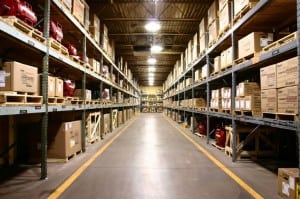The continued growth of omnichannel has changed the dynamic of how much warehouse space companies need and where. As a result, public warehousing, or the short-term use of a 3PL facility, is becoming an increasingly popular supply chain practice.
The good news is there are numerous such operations throughout the world. The bad news is not all of these facilities are created equal, especially when it comes to your particular supply chain.
With hundreds of millions of public warehousing space available in North America alone, how can your company do the best possible job of differentiating between facilities? Just as important, how can it choose the retail warehouse space that will be a perfect fit?
Here are a few guidelines that might help.
Don’t just go with the tried-and-true
Although people are fond of saying, “If it’s not broken, don’t fix it,” automatically searching for public space in the same markets where you’ve always had warehousing facilities isn’t a guarantee of success.
For one thing, your company may only be operating warehouses in some of those markets because it’s tied to long-term leases, contracts or mortgages. For another, it’s possible that many additional wrinkles have been added to your supply chain scenario since those locations were selected.
Before sending out a public warehousing RFP, take advantage of the opportunity to at least consider shifting things around geographically, using site selection and modeling tools to pinpoint the best locale or collection of locales rather than relying on your own instincts. And if you don’t have such tools, consider asking potential public warehousing candidates to perform an optimization for you. The answers you arrive at might surprise you – and be considerably better for your supply chain in the long run.
Place a premium on transportation access
As it’s all about location, location, location in real estate, the most important element of any warehouse selection is usually transportation, transportation, transportation – or more specifically transportation access.
Transportation costs typically outweigh warehousing costs many times over and even small differences between where facilities are located can have a major impact on delivery speed.
Look carefully at how all the public warehousing facilities you’re considering connect to major transportation arteries such as interstates, highways, railways and ports. If any of them seem to be too far off the beaten path, cross them off your list. After all, even the most reasonably priced facility or the one that comes chock full of enticing tax incentives isn’t a bargain if it’s too remote.
Consider the future
One of the beauties of a using a public warehouse is that the arrangement can be brief and there are no long-term obligations. Even so, it’s rarely wise to choose a facility solely based on what it can do for you right now, because it’s always useful to have the option of extending or expanding your relationship if it’s working well. In fact, some public warehousing arrangements are so productive they’ve lasted decades.
With this in mind, take time to compare each of your prospective facilities’ scalability on a variety of levels. Among other things, find out how much additional inventory each facility could handle over and above what you’re hoping to have it handle now. Look into what kinds of additional services each offers. And ask where or if it has other locations you could use.
Knowing these things upfront will prevent you from choosing facilities that are already in danger of out-punting their coverage. It will also prevent you from having to seek out a different facility or provider every time your volumes or needs change.
See them for yourself
As shows like Catfish demonstrate, it’s not uncommon for something to look one way on paper (or online) but another in person.
That’s why it’s always a smart idea to make site visits to each public warehousing facility on your short list before making your final selection.
During these visits you’ll be able to see if these facilities truly are as spacious, conveniently situated and state-of-the-art as advertised. You’ll also be able to scrutinize things like cleanliness and maintenance, being mindful of the fact that if an operation cuts corners where those things are concerned, it probably cuts them in other areas, too.
Just as important, you’ll be able to spend some time with each facility’s general and operations managers to get a feel for how they operate and relate to their employees – and how well they’re likely to gel with your company and its key players. These assessments should make your final selection considerably easier and more clear-cut.
Ask around
Any public warehousing operator that’s trying to win your business is going to do its best to present a polished, professional image. But images don’t get products moved; performance does.
Don’t just take a provider’s word for how well it operates. And don’t assume you can trust what your company has observed, read and experienced during the selection process.
Reach out to independent sources who have little if any vested interest in any warehouse you select to get their take on how potential candidates perform; industry consultants, academics or trade journalists can be tremendously helpful in this respect. Ask each facility to provide you with the contact information for customers who currently using the facility so that you can check in with them. Also consider talking with customers at some of your potential providers’ other facilities. This can tell you a lot about whether they have consistent safety, productivity and quality initiatives in place.
Finally, ask potential providers to provide you with detailed examples of how they’ve handled products in your industry before. If you’re going to be the source of some facility’s learning curve, you deserve to know sooner rather than later.
These opinions and reality checks are really worth their weight in gold.
Fabio Duque is Global Vertical Leader of Consumer for APL Logistics
